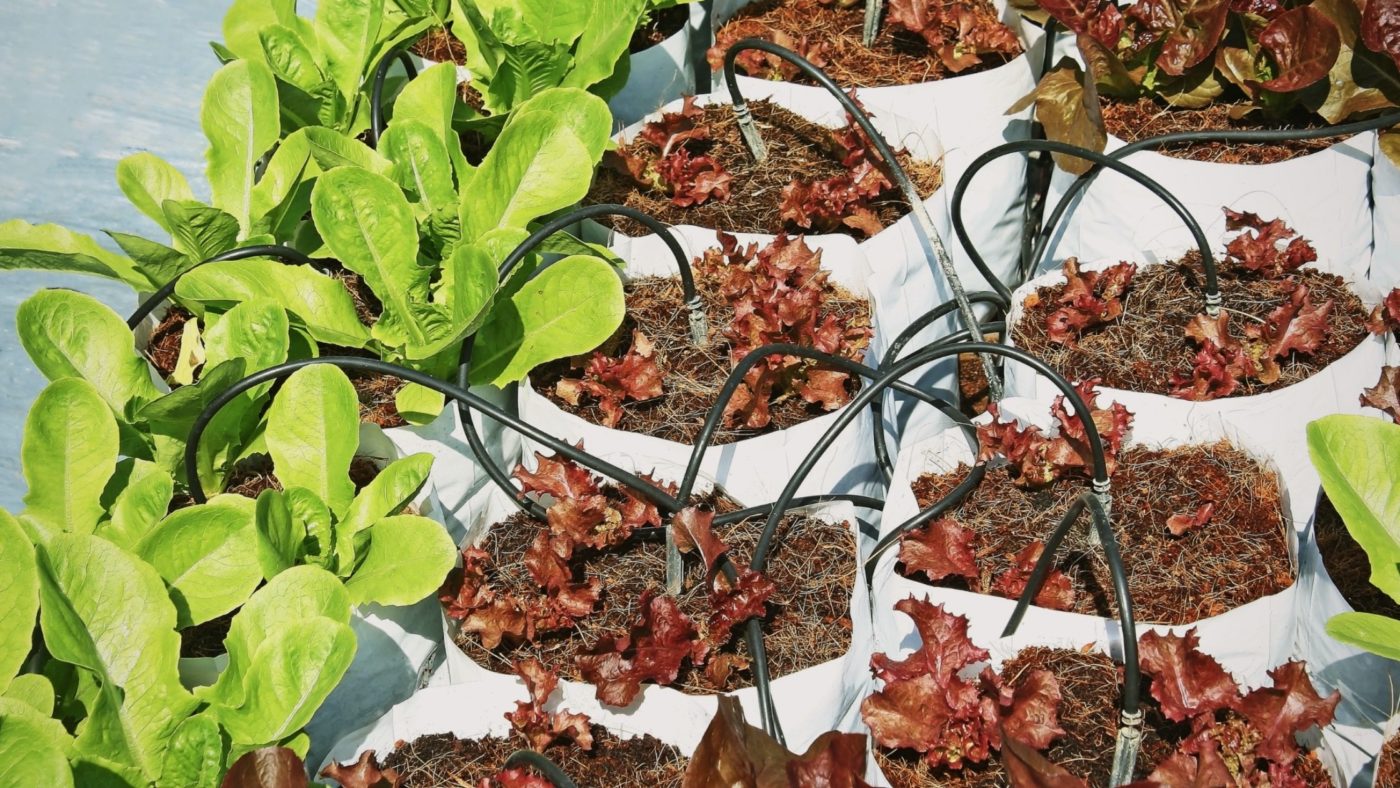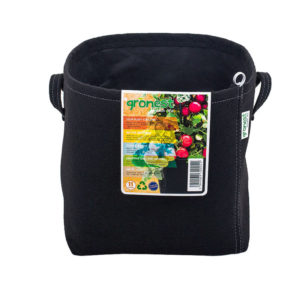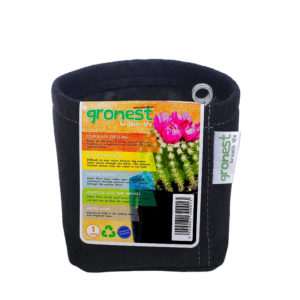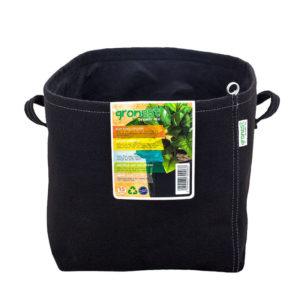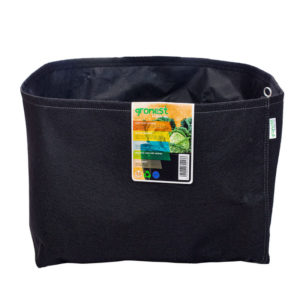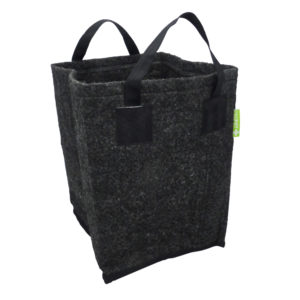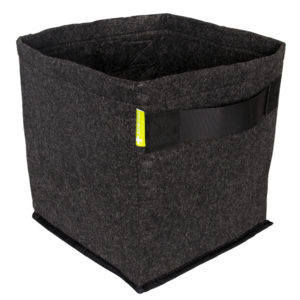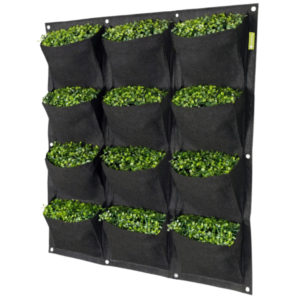With the rise of gardening, especially in the past few years, more and more people have been turning to container gardening. The traditional choice of pots is those made of plastic, sometimes clay. However, grow bags for plants have been gaining popularity due to the favourable growing conditions they provide. This makes them an almost foolproof system, especially for beginners or small-scale gardeners, but also for professional gardeners who seek ease of use.
Read below to find out more about all the pros and cons of grow bags, what soil to use, what to plant in them, and more valuable guidelines.
What are Fabric Pots or Grow Bags?
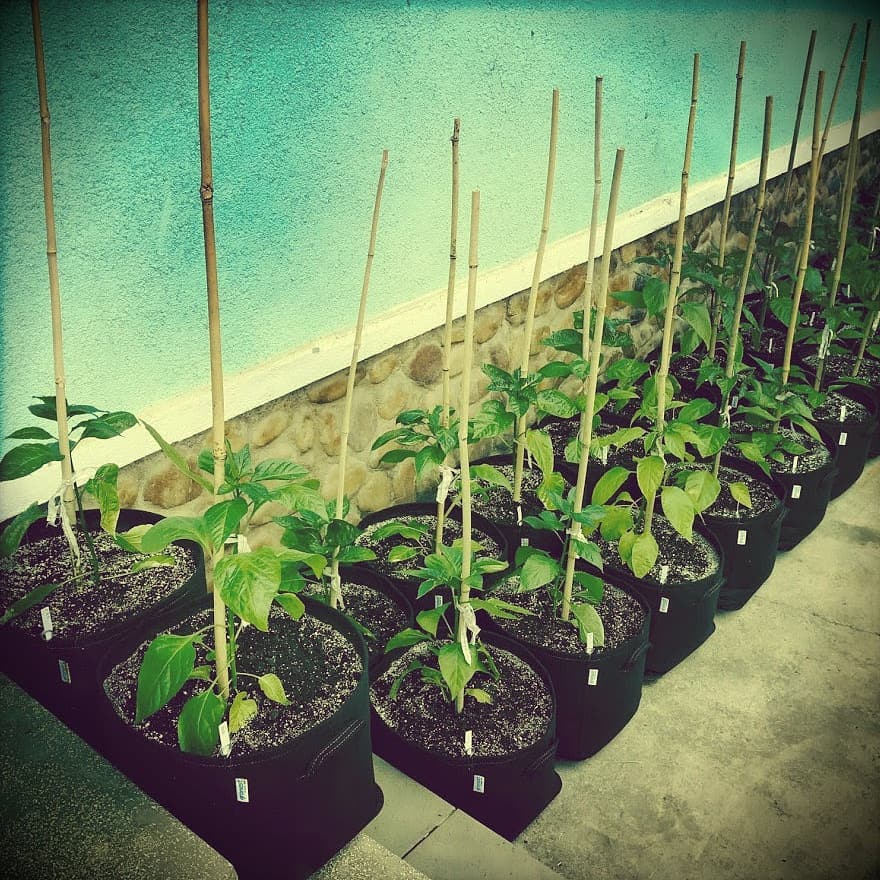
Fabric pots, also known as grow bags for plants, are soft containers made from breathable fabric, often made from recycled materials. They offer a reusable, movable alternative to plastic pots. The fabric pots UK gardeners prefer vary in size and nature. Whether they’re smaller-sized ones to be placed on the ground, larger pots used to form raised beds, or hanging grow bags that save even more space, they all provide improved aeration, drainage, a healthier root system, and more.
Image source: IG @gronest
History of Fabric Pots
Fabric garden pots were first introduced in the 1970s. At the time, farmers were struggling with sterilising or completely replacing their greenhouse soil every year to eliminate pests and diseases. Thus, grow bag cultivation became very popular. Vegetable grow bags made it easier to restock soil and prevent contamination.
What can you plant in Fabric Pots?
In terms of what to grow in grow bags, UK gardeners practically have dozens of options. From vegetables and fruit, through herbs, flowers, to even small-sized trees.
Some of the best plants for grow bags include tomatoes, leafy greens (e.g. lettuce, kale, spinach), onions, cucumbers, capsicum, carrots, radishes, sweet peppers, chillies, zucchini, eggplants. Ideally, it would be best to use your grow bag planters for plants that have small root structures. You can combine several varieties in one container to optimise space.
What kind of soil to use in fabric pots?
Depending on your needs, you can fill your garden grow bags with almost any soil or soilless material such as peat, green waste compost, bark or wood chips, or a mixture. For example, you can combine equal parts compost and topsoil.
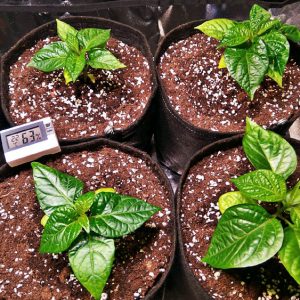
Depending on your needs, you can fill your garden grow bags with almost any soil or soilless material such as peat, green waste compost, bark or wood chips, or a mixture. For example, you can combine equal parts compost and topsoil.
Some gardeners use a three-part mix of peat moss, compost, and vermiculite. You can cover the surface with a layer of mulch to prevent weeds and retain moisture.
Image source: gronest.com
What size fabric grow bag should I use?
Various grow bags sizes are available, from 1 gallon to over 20 gallons. You can choose the right size depending on space, whether you plan on moving the containers, etc. But most importantly, take into consideration your plants’ genetic characteristics and growth potential.
For example, a 3-gallon bag works well for a single pepper plant or a couple of lettuces. Five-gallon bags are suitable for flowers and herbs, while 7-gallon ones are ideal for leafy greens. Ten-gallon pots are the perfect grow bag size for vegetables such as tomatoes, peppers, broccoli, cauliflower, beets, or carrots. Use 15-gallon bags for potatoes, zucchini, and eggplant. You can opt for the 20-gallon size if you’re planting watermelons, pumpkins, and sweet potatoes.
Pros and Cons of Fabric Pots
There are different pros and cons of grow bags to consider, and we’ve outlined the key aspects that set them apart from traditional pots.
Pros:
- Grow bag planters promote natural air pruning. As roots reach the sides of the pot and sense higher oxygen levels, they will branch off into smaller feeder roots. This is in stark contrast to plastic pots, where roots begin to circle as they reach the edge of the pot and get tangled, resulting in a stressed, root-bound plant.
- The air-pruning process creates a healthy root system and increases root mass, which stimulates better water, oxygen, and nutrient absorption. This enables faster plant growth and heavier yields.
- Good drainage and moisture control are another important benefit. Due to the permeable material, it’s almost impossible to overwater your plants as excess water drains easily. No standing water means no root rot, mold, or pests. This is difficult to achieve with traditional pots, despite the presence of holes.
- Better aeration not only provides more oxygen to the roots and promotes a healthy root zone filled with beneficial microorganisms, but also regulates temperature. As opposed to plastic containers, where these microbes literally ‘cook’ inside the pot in hot weather, the air inside fabric pots ensures cooler soil.
- Last but not least, durability and easy storage. Reusable grow bags can be used for several growing seasons or washed and easily stored away when not in use.
Cons:
- Due to the porous nature of the material, plants in fabric pots require more watering as the soil can dry out more quickly. However, fabric pots work perfectly with ebb-and-flow systems.
- Grow bags can be harder to move. Thus, it’s a good idea to consider models with handles to facilitate moving.
- Since plants kept in containers live in a more limited amount of soil compared to garden plants, they need more frequent fertilisation.
- With fabric pots, it’s function over form and although more colorful models are being introduced, the majority may not be as aesthetically pleasing as other pots. But higher class fabric pots can easily hold up their own in the aesthetics department.
- Fabric pots are not as durable as some traditional pots. However, some clay and plastic pots are also prone to cracking and shattering, so you still need to ensure they’re made from high-quality materials and are properly taken care of.
GroNest Fabric Pots Technology and Benefits
GroNest is a leading European manufacturer that has been around since 2014. Their high-quality fabric pots are environmentally friendly and made from recycled PET bottles, meaning they’re 100% non-toxic.
The Gronest fabric pots prevent root circling through air pruning. As a result, your plants will develop a strong root system, constantly producing new branches.
Due to proper oxygenation, the roots will also stay cooler during hot weather. In addition to that, the porous fabric provides superior drainage by eliminating excess water. It makes the pots perfect for hydroponic gardening too!
The material is non-breakable and frost-resistant. You can wash and reuse your pots for several seasons, and the triple-folded handles make it very easy to move them anytime you need to.
In addition to the benefits above, what sets Gronest apart is their proprietary “Aqua Breathe” technology, which involves a special geotextile. The sides of all Gronest fabric pots are lined with an additional “Aqua Breathe” layer. It’s breathable but less permeable than the bottom; therefore, all water drains from the pot’s base. It will not stain on the outside. At the same time, the “Aqua Breathe” layer makes the pot more durable and resistant.
Garden HighPro Fabric Pots
The Garden HighPro SoftPot Fabric Pots are sturdy square-based containers. They feature a reinforced bottom, dense fabric, and convenient handles. These pots come in packs of 10, making them very cost-effective and perfect for larger gardens. The sizes range from 15 litres to 50 litres, so you can mix and match depending on your growing needs.
Garden HighPro SoftPot Fabric Pots promote soil respiration, optimal temperature conditions, and air root pruning. They can be used both indoors and outdoors and will last you several seasons.
Not to mention, unlike most fabric pots on the UK market, they are rectangular in shape. This allows you to optimize your grow room or garden space. With rectangular containers, every inch will be used and the chance for weeds to grow between your pots in the garden will be even smaller.
Last but not least, the Garden HighPro SoftPot grow bags look stylish and sleek thanks to their luxurious material and elegant handles. A perfect combination of aesthetics and usefulness!
Garden HighPro ProPot Wall are another great fabric pot idea for the space-conscious gardeners. These high-quality fabric pots are ideal for vertical gardening. Find out more about growing in vertical fabric pots here.

